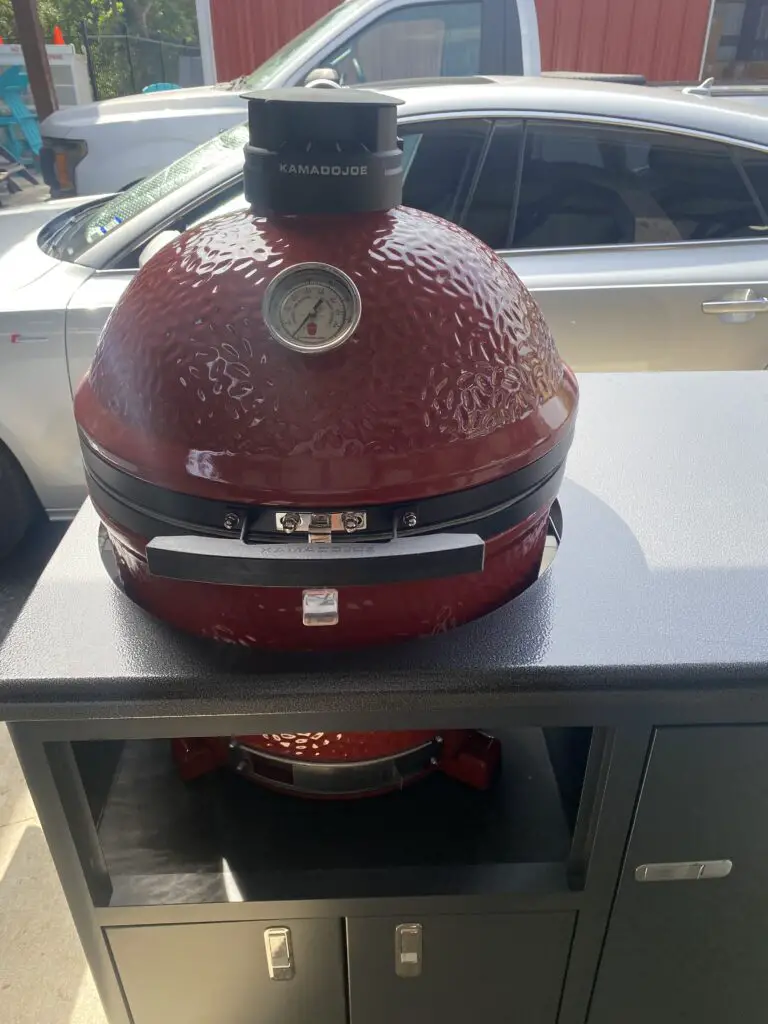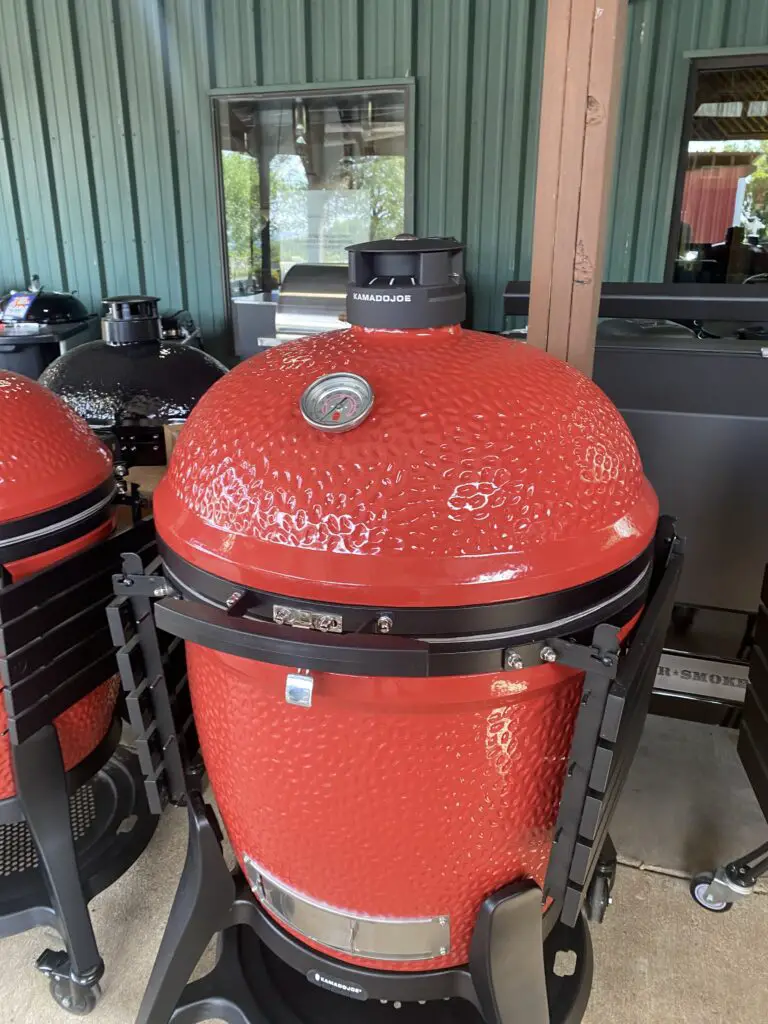We strive to provide you with authoritative, trustworthy, and expert advice. In doing so, the staff at bbqdropout.com performs extensive research, editing, and fact checking to every post on this webiste. If you feel that this article can improve, please feel free to reach us at staff@bbqdropout.com
Before continuing this article, I wanted to let you know that I have a YouTube channel where I showcase all sorts of video content related to BBQ. Subscribing would mean a lot to me, and I very much appreicate all the support!
How To Prevent Mold in a Kamado Joe
Preventing mold in a Kamado Joe starts with keeping it as clean as possible, and taking steps to prevent condensation buildup in the fire chamber.
If you’ve had problems with condensation buildup inside the Kamado Joe, you should leave the bottom damper and upper vent open a crack, with the lid unlatched.
This will allow a small amount of airflow to reduce the risk of condensation.
If mold does develop inside your Kamado Joe, you should burn it off at 500 degrees for half an hour.
This will kill all mold spores and break down any lingering mycotoxins. Then give the grill grates a thorough wipe down and make sure to completely clean out the bottom of the fire chamber.
If mold develops in other areas, like the exterior seam of the gasket or the side tables, you should clean it away with a hydrogen peroxide-based cleaning solution. Hydrogen peroxide can destroy the microscopic roots mold makes in porous materials and is more effective for mold remediation than bleach.
What Causes Mold in a Kamado Joe?
Condensation, food debris, and rendered grease that lingers inside a poorly cleaned Kamado Joe can provide airborne mold spores with what they need to germinate into a small mold colony.

Once this happens the microscopic roots of the mold colony can embed themselves in porous surfaces, like the textures of the Kamado Joe’s lid seal and other places around the grill body.
Condensation in Kamado Joe
Condensation in a Kamado Joe can come from several sources, including ambient humidity that enters the ceramic keg of the grill body when it’s not being used.
Lingering moisture from things like a runny marinade, rendered fat, and lingering food debris can also add moisture that condenses with the temperature change of the outside air.
If you use low-quality charcoal briquettes and you leave them in your Kamado Joe after a cook, they can also give off some ambient humidity that turns into condensation.
Does Fire Kill Mold Spores?
Fire will kill mold spores and active mold colonies in seconds. Though trichothecene mycotoxins which are attached to many strains of mold need temperatures of over 500 degrees for over half an hour to break down.
Some of these mycotoxins can contaminate food and make people very sick. Especially if the mold affecting your Kamado Joe is from the Stachybotrys chartarum strain known as “Toxic Black Mold.”
How to Clean Mold in a Kamado Joe
To clean mold out of the interior fire chamber of a Kamado Joe you need to burn a fire at 500 degrees for half an hour.
This will kill all traces of mold as well as break down any potentially harmful mycotoxins. Then you can wipe down the grates and clean out all the ash from the bottom.
If you have mold in other places that can’t be burned off, you want to use a hydrogen-peroxide-based cleaning solution. Hydrogen peroxide can kill the microscopic roots mold can make into porous surfaces, and is more effective than bleach for killing mold.
How Do You Keep Kamado Clean?
Keeping your Kamado Joe free of mold starts with routine cleaning to remove all food debris and grease. Then clean out all the charcoal and remnant ash 24 hours after every cook.
Cooking frequently will also kill any mold spores before they have a chance to germinate into an active colony.

You should also leave your lower air damper and lid vent open just a crack once your Kamado Joe has cooled down. This will allow for a little airflow to prevent condensation from building up inside the fire chamber.
Final Thoughts
Preventing mold in a Kamado Joe starts with thoroughly cleaning the interior fire chamber once everything has safely cooled down. Removing unburned charcoal and all traces of food debris reduces the ambient moisture inside the fire chamber.
Then leaving the lower damper and top lid slightly open will promote airflow to reduce the risk of condensation buildup.
If you go a long time between cooks and mold does develop inside your Kamado Joe, you can easily burn it off.

This calls for firing it up to 500 degrees and letting the flame burn for a solid half-hour will kill all traces of mold and destroy any lingering mycotoxins.
Then you can clean away any other traces of mold in other places with a hydrogen peroxide-based cleaning solution.
Robert is a certified Pitmaster, with over a decade of experience in smoking the best meats you’ll ever feast upon. He also has a Bachelor of Business Administration from the University of Texas at San Antonio. When he’s not researching technical topics, he’s most likely barbecuing in his backyard.
